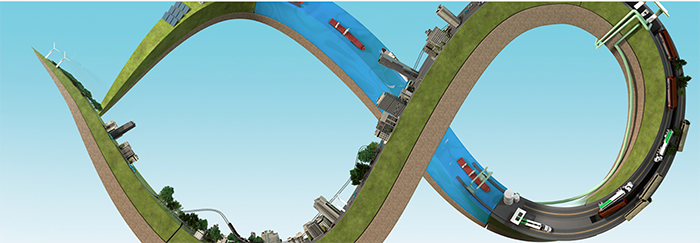Manish Patel – Hydrogen Mobility and Transition expert at Air Products
The UK government has published multiple strategies in recent months outlining its approach to decarbonising the way we live, work and travel. These strategies have included decarbonising transport; developing a thriving low carbon hydrogen sector in the UK; and a focus on net zero to build back greener – together, they reinforce the message that there is now a clear push towards zero emissions fleets.
The Government’s UK Hydrogen Strategy “expects low carbon hydrogen to play a key role in decarbonising the (transport) sector” and while only around two per cent of England’s local operator bus fleet is currently zero emission, this will undoubtedly start to increase, as a result of additional funding support and the accelerated pressure to move towards net zero.
However, this pressure could easily trigger fleet operators to adopt quick-access, short-term solutions. Instead, local authorities and transport companies (particularly bus operators) should partner with experts in hydrogen for mobility to think strategically about how to decarbonise their fleets. In particular, to consider whether they need to decarbonise their full fleet or find a partial conversion solution and to understand how the decisions they make to green their fleets now will play out in the long-term.
What’s clear in all of this is that decarbonising heavy-duty transport requires investment and change, so short-term solutions are best avoided. Getting the best return on investment over the long term means considering the full range of options to future proof your fleet.
But how does this translate on the ground for operators – such as local authorities, haulage operators and bus companies – many of whom are already working hard to consider how they can promote cleaner air in their areas and reduce their carbon emissions?
It’s an important issue we’ve also been addressing. At Air Products, we’ve been working in the hydrogen sector for decades and have developed a range of proven hydrogen technologies that will support widescale energy transition in the transport sector. We believe hydrogen is the future for heavy duty segments of the transportation market and we can demonstrate to the world its merits by being one of the first companies to transition our heavy-duty fleet of trucks to hydrogen fuel cell electric vehicles.
Ultimately, the real long-term opportunity for local authorities is in the hydrogen refuelling infrastructure. If a local authority decides to convert its fleet into hydrogen vehicles, why not allow that station to be used by others?
Local authority refuelling infrastructure could provide anchor points for heavy duty vehicles at key locations throughout the area – which can be accessed by other small businesses. Operators therefore need to carefully explore the infrastructure required to convert their fleet and determine what’s going to serve them – and their wider communities, best in the future.
For example, if a local authority converts its refuse trucks into hydrogen vehicles and builds a refuelling station, then other local businesses could choose to decarbonise their own fleets because they are now able to share the local authority’s hydrogen infrastructure, without having to invest in building their own refuelling station or relocating. We have seen the benefits of sharing infrastructure ourselves, as our flagship hydrogen refuelling station at London Heathrow initially served London’s first hydrogen-fuelled black cab taxis at the London 2012 Olympic Games, but is now regularly used by couriers, taxis, police vehicles and buses, as well as the first hydrogen trucks. It is a win-win situation which helps to improve local air quality too.
Choosing the right type of hydrogen fuel for your needs is also key. Depending on whether liquid or gaseous hydrogen is selected, it’s possible for the infrastructure to be ramped up easily to meet increased demand, with just minimal investment required in terms of an additional dispenser and pump. This ensures users can still continue to meet the required fuelling window (i.e. how long organisations have to fuel their fleet). Similarly, the footprint size of the refuelling station can also be dependent on whether faster refuelling times are needed, as a couple of vehicles can be refuelled in a few minutes.
There s no doubt that future proofing any new infrastructure is critical, as all organisations, including Air Products, begin reducing their carbon emissions. Ultimately, it’s always tempting to roll out a short-term solution that demonstrates proactivity in addressing the net zero challenge. However, taking a closer look at the refuelling infrastructure and understanding the benefits and potential opportunities will certainly be valuable in the long-term.











UK Enters ‘Golden Age of Nuclear’
Apologies if this is a duplicate post - a glitch appears to have removed the first one: > While I welcome the announcement of this project, I note...